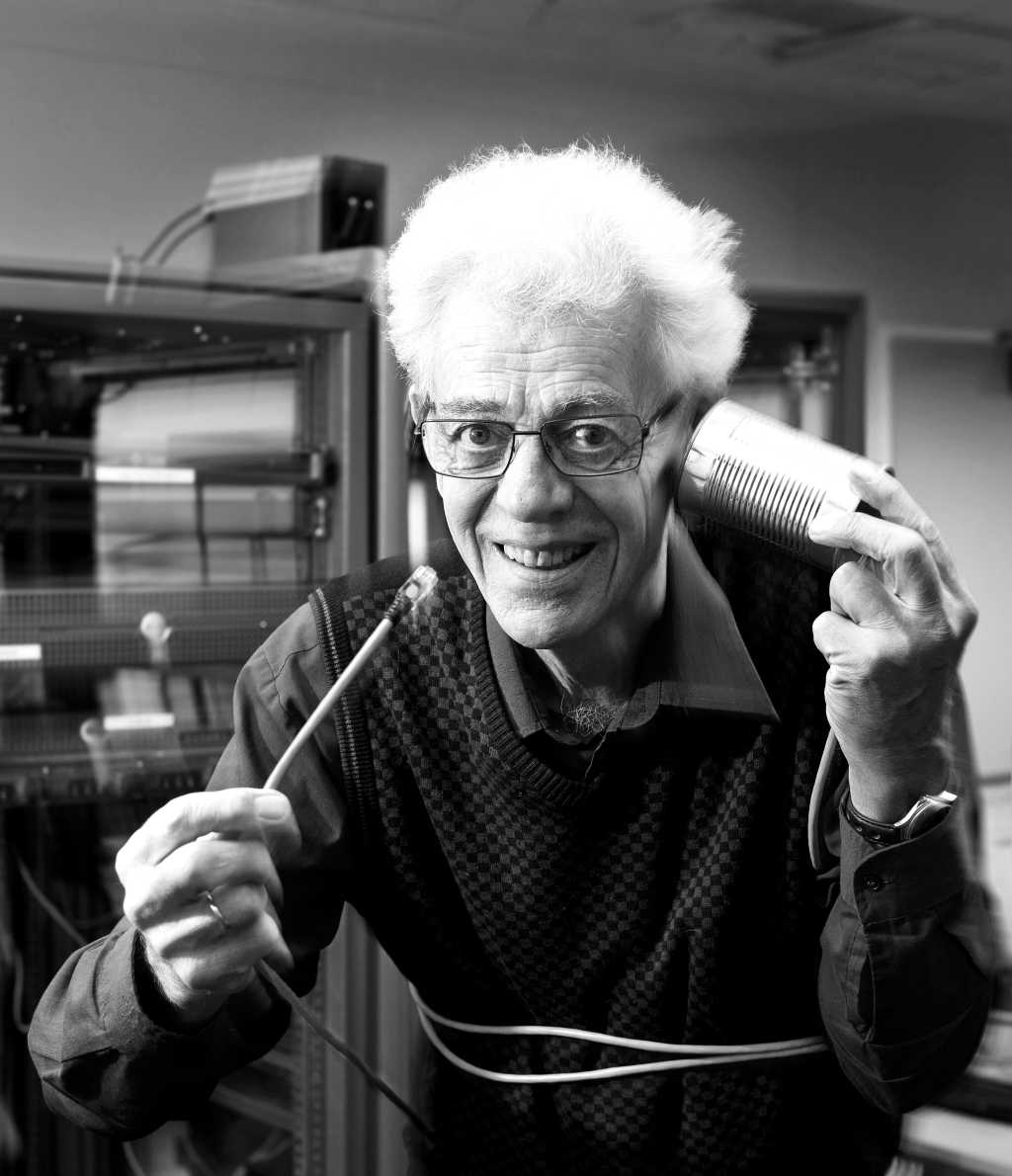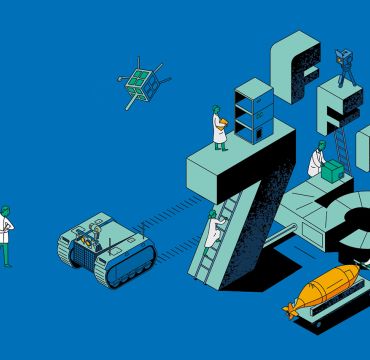From the US to FFI: Kjeller was first online
On 15 June 1973, Kjeller became the first place outside the United States to go online. Pål Spilling at FFI pressed the necessary keys.

The outcome was the result of defence matters, old friendships, a little luck and an impressive effort by FFI. These factors helped enable Norway to become the first international member of the Arpanet (ARPA – Defence Advanced Research Projects Agency). The Arpanet was the precursor to what is now known as the Internet.
Spilling, age 39 at the time, was the assistant of FFI researcher Yngvar Lundh. FFI’s journalist Øystein Hagen interviewed Spilling 30 years later. In the interview, the researcher stated that he saw two rea- sons for Kjeller to become the first node outside the United States: The first was that it already had a good relationship with ARPA via the Norwegian Seismic Array (Norsar), where Norway had a strategically important position.
The other reason was the American Lawrence Roberts, or Larry, as he was known among friends. In the early 1970s, Roberts led ARPA’s Department of Communication. Larry completed his PhD work at the Massachusetts Institute of Technology (MIT). FFI’s Yngvar Lundh worked in the same laboratory.
Arpa against nuclear bombs
Pål Spilling was not a computer expert. He was a nuclear physicist. Yet there was still a connection: Arpanet had direct connections to nuclear threats.
The man that pressed the keys of the very first TIP (Terminal Interface Processor) outside the United States, at the Norsar premises on this day in June 1973, realised how important this could become.
Spilling knew pretty much all there was to know about nuclear bombs and underground nuclear weapons testing. The Cold War lasted from the end of World War II until the fall of the Ber-lin Wall in 1989. NATO and the Warsaw Pact were rivals for 44 years. The conflict involved the balance of terror and the arms race. It also related to who had the most powerful and highest number of nuclear weapons. The parties had entered into a mutual agreement to halt testing. Neither party believed that the other would uphold their end of the agreement. At least not if they could get away with it unpunished. Thus, Norsar at Kjeller was established, as a branch of FFI.
Norsar used geophones to detect ground vibrations in the strategically important northern regions. Such detection instruments can be compared to putting your ear to the ground. Both larger and smaller vibrations could have natural explanations. At the same time, they could also serve as a warning that the Soviet Union was conducting unlawful underground nuclear weapons testing.
Norsar produced daily reports. These were sent through a regular line to the Swedish satellite station in Tanum. From there, they continued via satellite to the United States.
Balance of terror disrupted
Both NATO and the Warsaw Pact realised the following: In order to win a nuclear war, the attacking party had to annihilate its enemy. With one strike. Both knew that if the enemy had the opportunity to respond to the attack, all life on earth would be threatened. Only the party that triggered a nuclear war could win.
The use of packet switching via Arpanet significantly reduced this threat. Packet switching split this communication data into small segments referred to as packets. The packets had information in the address field that could reorder the information back into a single file. This was possible, although sometimes an information packet or two went missing. Parts of the communication data took different paths through the network. They were then put back together at their destination.
A massive nuclear attack could not stop the information others needed to retaliate. Someone would then be able to immediately respond to a nuclear attack. This could be done from an entirely different place in the United States. Or from the rest of the world.
Packet switching changed the rules of the game. The very logic of the balance of terror took a hit. It was no longer possible to view things the same way. I.e., if a military base were destroyed by a nuclear attack, the attack would also make it impossible to retaliate simultaneously. The balance of terror had become a game that was impossible to win.
Arpanet had therefore contributed to the ending of the Cold War. Norway was a strategically important NATO outpost. A great deal of communication and information was sent via Kjeller. This site was therefore vulnerable. It had never been more dangerous to work at Kjeller than during the days of the Cold War.
FFI visited Washington
Larry Roberts and his second-in-command, Bob Kahn, visited Kjeller in the summer of 1972. They proposed a collaboration on the data network via satellite. Yngvar Lundh convinced FFI Director of Research Finn Lied and Research Director Karl Holberg to go along with the idea.
They were invited to Washington, partly to see the Arpanet. Here, some technical problems were resolved. A technological strategy for Norway’s connection with Arpanet was devised.
How would this develop? Neither Lundh, Pål Spilling nor Finn-Are Aagesen had any idea. Aagesen was the third key Norwegian in the Arpanet efforts. Pål Spilling also took a business trip to their network friends at University College of London (UCL) and later to Stanford University in the United States. At Stanford, he also met several of the key participants in the Stanford University Network, later known as SUN.
Internationally, the Arpanet network be- came operational on 15 June 1973. Signals were transmitted via satellite stations in Tanum, Sweden and Etam, West Virginia in the United States. INTERNET, in capital letters, became the designation that included both the Arpanet and the international nodes. The Internet, as we know it today, was given its name in 1983. At that point, the network was shared between a military (with the suffix .mil) and a civil research network (with the suffix .edu).
It had never been more dangerous to work at Kjeller than during the days of the Cold War.
A sandbox for everyone
The research groups that Kjeller researchers joined met frequently. Between meetings, they did something that the world was not yet aware of. They sent one another emails. Discussions, network measurements, program codes and ideas were all sent back and forth.

New solutions were tested, tried, corrected, debugged, and tested again in record time. Often, such things occurred over the course of a day or two. All important information was documented in RFCs (Request for Comments). This was made available to everyone. In other words: Arpanet became a distributed laboratory for researchers and students.
In this sandbox, they generously shared everything they learned and received even more. Researchers at FFI played an important role in the development of packet switching in the network. They continued to develop the technology into the 1980s, through the SATNET project. Up until the end of the decade, the exchange of ideas continued between elite universities in the United States, UCL in London and FFI.
FFI contributed to the protocols
he institute participated in the highly active network of nine different researcher groups. This commenced in 1972 and continued for ten years. This collaboration resulted in the protocols TCP/IP.
Thus, the standard for packet switched satellite channels, CPODA, was established. Over time, FFI’s neighbour and offshoot, Televerket’s forskningsinstitutt (Norwegian Telecommunications Administration’s Research Institute), or TF, took over, encouraged by Pål Spilling. He wanted more extensive work on the Internet. But he was not heard. TF was embedded in the government telecommunications monopoly. The institute made the same priorities as most government telecommunications monopolies.
Anarchists were bound
The same applied to other European telecommunications agencies. They took control in the 1980s. These were old and often cumbersome organisations. All research collaboration became more formally organised, more structured and slower. The X400 standard for communication of messages became essential. The network via this protocol was the foundation. It was also required in order to be granted research funding. Researchers almost secretly retained what they could, their @ address. This enabled them to maintain network contact with their American colleagues.
"More hierarchical, less anarchic – a duller and less dynamic working method", said Spilling. He compared this to the rivalry between Microsoft and UNIX. The latter continued the tradition where everyone has access to a source code and anyone who had something significant to contribute would be heard.
20-year ice age
This became a sort of ice age for Norwegian Internet involvement on the research front. It lasted until the Internet was commercialised in 1993. This was nearly 20 years after Pål Spilling established the first connection with the Arpanet.
It should be noted that Norway and Kjeller were not alone in this new connection for very long. Their lead, on this day in June 1973, lasted only 20 minutes. The University College of London (UCL) were then given the opportunity to connect, right behind Norway.
The idea behind the US defence network was about to become a public domain. Thus, the contributions of FFI researchers were an important step on the path toward the Internet. A network no one can imagine being without anymore.

